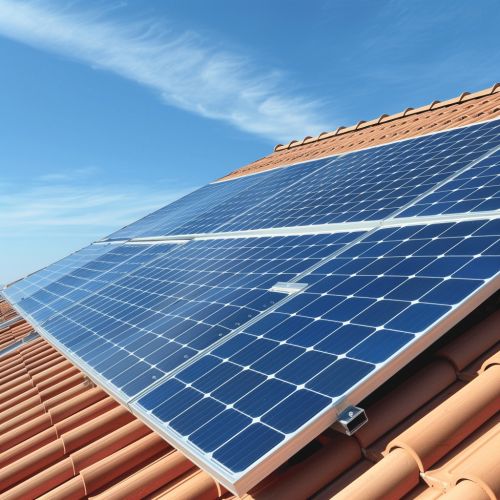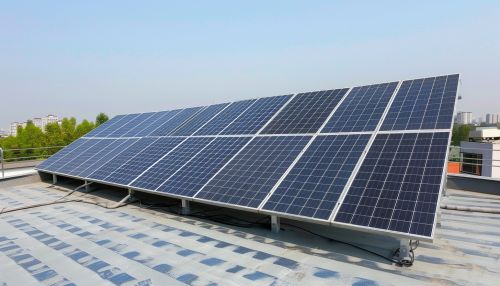Green energy
Introduction
Green energy, also known as renewable energy, refers to energy derived from natural sources that are replenished at a faster rate than they are consumed. These sources include sunlight, wind, rain, tides, waves, and geothermal heat. Unlike fossil fuels, which are finite and contribute to environmental degradation, green energy sources are sustainable and have a minimal environmental impact.
Types of Green Energy
Solar Energy
Solar energy is harnessed from the sun using photovoltaic cells or solar thermal systems. Photovoltaic cells convert sunlight directly into electricity, while solar thermal systems use mirrors or lenses to concentrate sunlight and produce heat, which can then be used to generate electricity or provide direct heating.


Wind Energy
Wind energy is generated by converting the kinetic energy of wind into mechanical power using wind turbines. These turbines are typically installed in wind farms, which can be located onshore or offshore. Wind energy is one of the fastest-growing sources of green energy due to advancements in turbine technology and decreasing costs.
Hydropower
Hydropower, or hydroelectric power, is produced by capturing the energy of flowing water. This is typically done using dams that release water through turbines, generating electricity. Hydropower is one of the oldest and most widely used forms of renewable energy.
Biomass Energy
Biomass energy is derived from organic materials such as plant and animal waste. These materials can be burned directly for heat or converted into biofuels such as ethanol and biodiesel. Biomass energy is considered renewable because the organic materials used can be replenished through natural processes.
Geothermal Energy
Geothermal energy is obtained by tapping into the Earth's internal heat. This can be done through geothermal power plants, which use steam produced from reservoirs of hot water found below the Earth's surface to generate electricity. Geothermal energy can also be used directly for heating purposes.
Benefits of Green Energy
Environmental Impact
Green energy sources produce little to no greenhouse gas emissions, significantly reducing the carbon footprint compared to fossil fuels. This helps mitigate climate change and reduces air pollution, which has positive effects on public health.
Economic Advantages
The green energy sector creates numerous jobs in manufacturing, installation, and maintenance. Additionally, the decentralization of energy production can enhance energy security and reduce dependence on imported fuels.
Technological Innovation
Investment in green energy drives technological advancements, leading to more efficient and cost-effective solutions. Innovations in energy storage, grid management, and smart technologies further enhance the viability of renewable energy sources.
Challenges and Limitations
Intermittency
One of the primary challenges of green energy is intermittency. Solar and wind energy are dependent on weather conditions and time of day, which can lead to fluctuations in energy supply. Energy storage solutions and grid management technologies are essential to address this issue.
Initial Costs
The initial investment required for green energy infrastructure can be high. However, the long-term benefits, including lower operational costs and reduced environmental impact, often outweigh the initial expenses.
Land Use and Environmental Concerns
Large-scale green energy projects can have significant land use implications. For example, hydroelectric dams can disrupt local ecosystems and displace communities. Wind farms and solar installations also require substantial land, which can impact wildlife habitats.
Future Prospects
The future of green energy looks promising, with continuous advancements in technology and increasing global commitment to reducing carbon emissions. Policies and incentives that support renewable energy development are crucial for accelerating the transition to a sustainable energy future.
